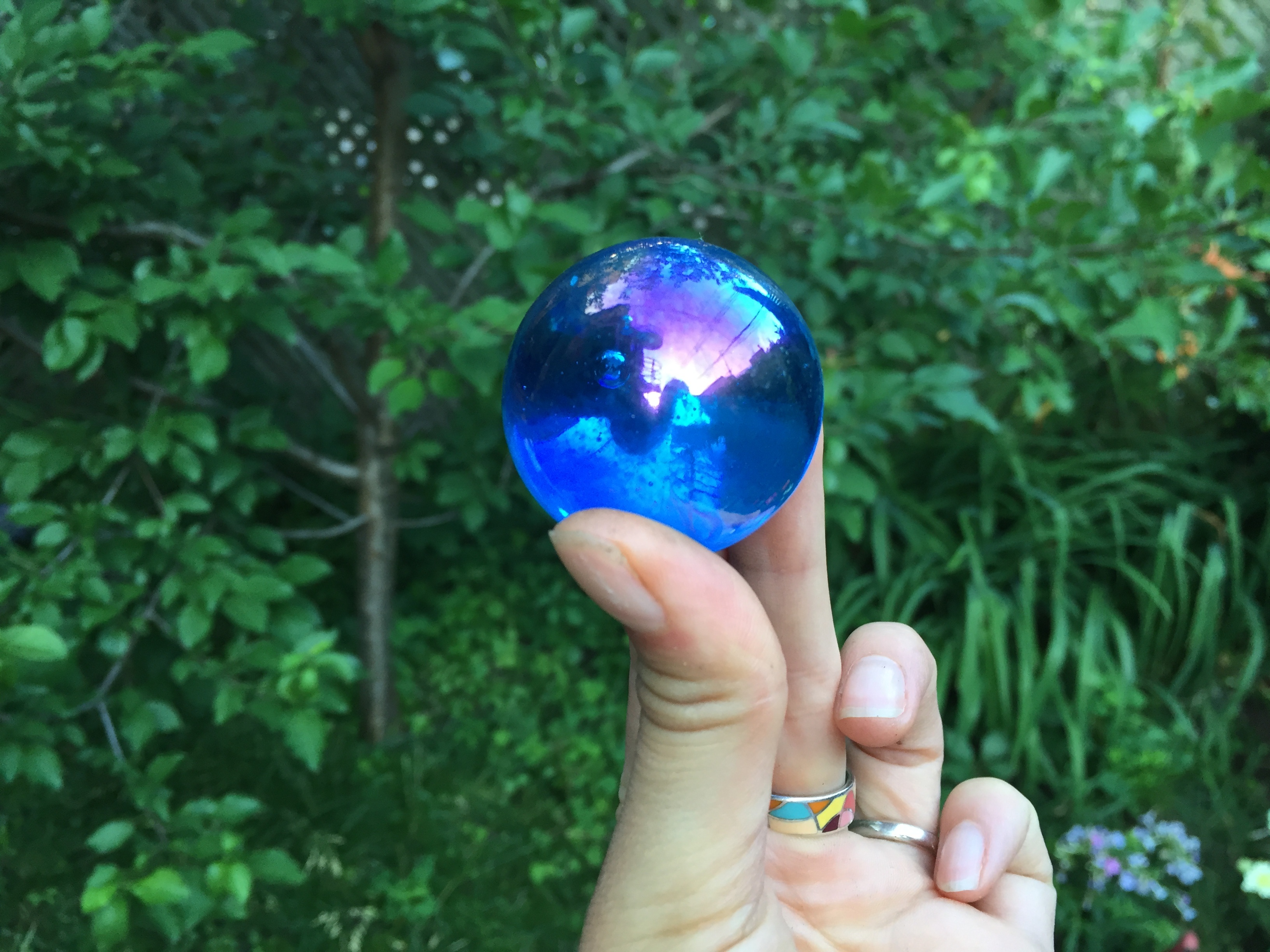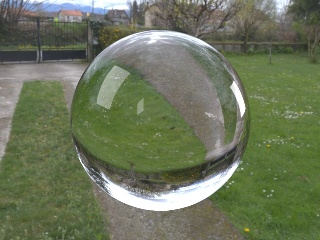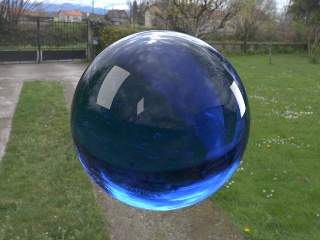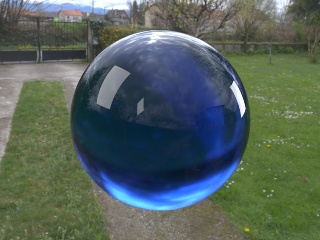The full UI of the glass material. Only two main components: reflection and refraction, supplemented by a physically accurate thin-film interference rendering.
We will try to approximate the look of this marble. We definitely need a blue color for the "interior" of the marble. But which parameter to use, Refraction Color or Transmittance ? Since the inside of the marble is solid, Transmittance is the best choice because it will simulate an exponential light falloff. Transmittance = blue with a strength of 2.3 We can simulate such fuziness by using a Refraction Roughness larger than 0. Reflection Roughness = 0 Simply enable thin-film interference and try to guess the IOR of the thin-film. As an educated guess, we set the IOR to 1.458 which is the index of refraction of silicon dioxide, a material that forms when glass is heated. Not surprisingly, we get a close enough match. Film Thickness = 0.25 ucm So we have a render that has many of the features of the original image. To continue the look development, one can use better lighting, internal object structure (air pockets) and varying thin-film thickness.Lookdev Example: Marbles
Observation Relationship to 3Delight Glass Parameters Render The marble is made of glass and has both reflection and refractions (transparent). We choose an IOR of 1.3 ("light" glass) for both reflection and refraction and dial in the same color for both effects. We have and overall bluish color. Note that some part of the marble are still white (reflection of sky).
Refraction Color = leave whiteThe interior of the ball is "fuzzy" while the reflections are mirror-like.
Refraction Roughness = 0.15There is a pink gradient on top of the sphere. This effect is recognizable as thin-film interference. In this case the marble must have some kind of very thin cover or has been heated and an oxide must have formed.
Film IOR = 1.458





